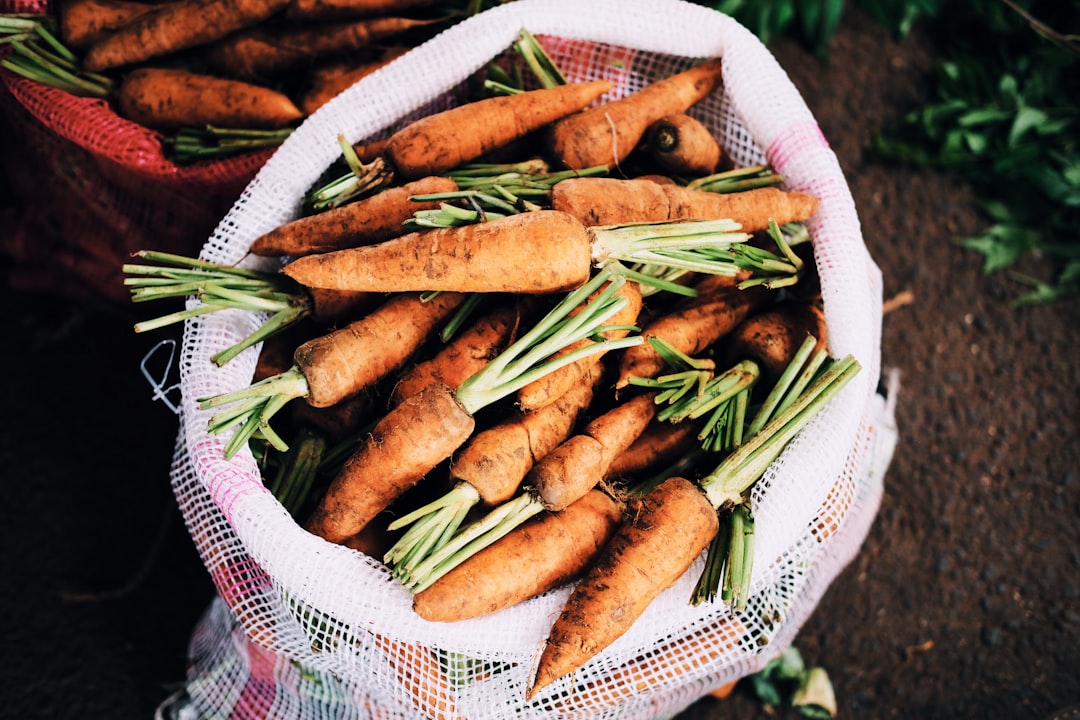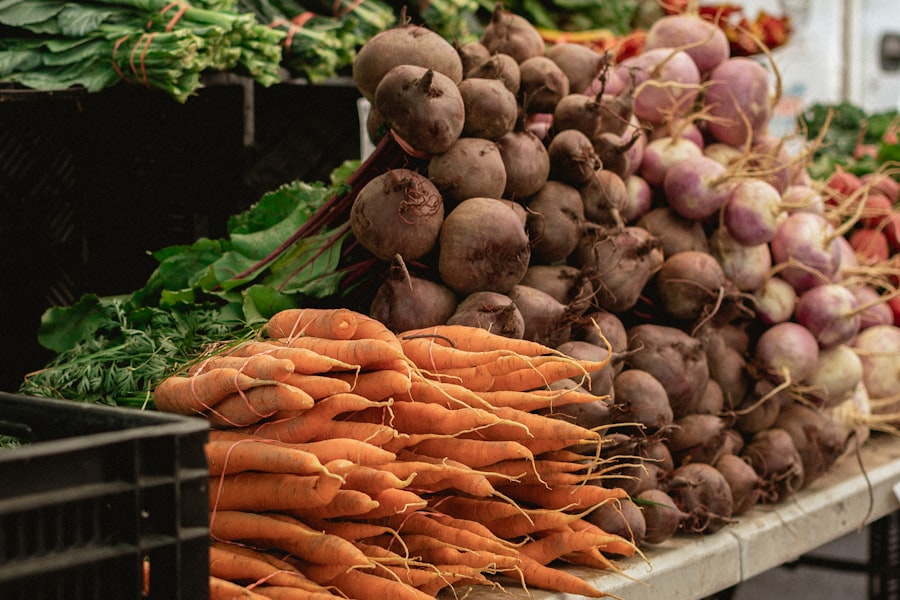When to Harvest Carrots: A Guide

Carrots are a popular and versatile vegetable that can be enjoyed in a variety of dishes. Whether you’re growing carrots in your backyard garden or on a larger scale, proper harvesting techniques are crucial for ensuring the best flavor and texture. Harvesting carrots at the right time is essential to maximize their sweetness and tenderness. In this article, we will explore the ideal time to harvest carrots, factors that affect harvest time, how to check if carrots are ready for harvest, tools needed for carrot harvesting, techniques for harvesting carrots, storing harvested carrots, common mistakes to avoid, tips for maximizing carrot yield, and finally, enjoying the fruits of your labor.
Key Takeaways
- Carrots are a popular root vegetable that can be harvested in the garden.
- The ideal time to harvest carrots is when they are mature and have reached their full size.
- Factors that affect carrot harvest time include weather, soil conditions, and variety.
- To check if carrots are ready for harvest, gently pull on the tops and look for a bright orange color.
- Tools needed for carrot harvesting include a garden fork, gloves, and a bucket.
The ideal time to harvest carrots
The optimal time to harvest carrots depends on several factors, including the desired flavor and texture. Carrots are typically ready for harvest when they have reached their full size and have developed their characteristic color. However, it’s important not to leave them in the ground for too long as they can become woody and lose their sweetness.
To determine if your carrots are ready for harvest, gently pull up one or two from the soil. If they are the desired size and have a vibrant color, they are likely ready to be harvested. Another way to check is by feeling the shoulders of the carrot – if they feel rounded and smooth, it’s a good indication that they are mature.
Factors that affect carrot harvest time
Several factors can impact the timing of carrot harvest. One of the most significant factors is weather conditions. Carrots prefer cool weather and can tolerate light frost, so it’s important to consider the climate in your region when determining when to harvest. In warmer climates, it may be necessary to harvest carrots earlier to prevent them from becoming bitter or tough.
Soil conditions also play a role in carrot harvest time. Carrots prefer loose, well-draining soil that is free from rocks and clumps. If the soil is compacted or heavy, it can be more challenging to harvest the carrots without damaging them. Additionally, the variety of carrot you are growing can affect harvest time. Some varieties mature faster than others, so it’s important to know the specific characteristics of the variety you are growing.
How to check if carrots are ready for harvest
| Metrics | How to check if carrots are ready for harvest |
|---|---|
| Size | Carrots should be at least 1/2 inch in diameter at the top of the root. |
| Color | The color of the carrot should be bright orange or orange-red. |
| Texture | The texture of the carrot should be firm and crisp. |
| Leaves | The leaves of the carrot should be green and healthy-looking. |
| Days to maturity | Carrots are usually ready for harvest 60-80 days after planting. |
To determine if your carrots are ready for harvest, there are a few key signs to look for. First, check the size of the carrots. They should be at their desired size, typically around 1 inch in diameter for most varieties. Next, examine the color of the carrots. They should have a vibrant orange color, although some varieties may have different colors such as purple or yellow.
Another way to check if carrots are ready for harvest is by inspecting the shoulders of the carrot. If they feel rounded and smooth, it’s a good indication that they are mature. Additionally, you can gently pull up one or two carrots from the soil to check their size and color. If they meet your desired criteria, it’s time to harvest.
Tools needed for carrot harvesting
To harvest carrots efficiently and effectively, there are a few essential tools you will need. First and foremost, a garden fork is essential for loosening the soil around the carrots. This will make it easier to pull them out without damaging them. A pair of gloves is also important to protect your hands from dirt and potential cuts from sharp roots.
A bucket or container is necessary for collecting the harvested carrots. This will keep them clean and prevent them from getting damaged during transport. Additionally, a garden hose or water source is helpful for rinsing off any excess dirt from the carrots before storing them.
Techniques for harvesting carrots

When it comes to harvesting carrots, there are a few key techniques to follow to ensure success. First, loosen the soil around the carrots using a garden fork. Be careful not to damage the carrots or their tops while doing this. Once the soil is loosened, gently pull the carrots out of the ground, grasping them near the base of the greens.
Avoid pulling on the tops of the carrots, as this can cause them to break off and leave the carrot in the ground. If you encounter any resistance while pulling, use the garden fork to loosen the soil further. Once the carrots are out of the ground, remove the tops by cutting them off with a pair of garden shears or a sharp knife.
Storing harvested carrots
After harvesting your carrots, it’s important to store them properly to maintain their freshness and flavor. Start by cleaning off any excess dirt from the carrots. You can do this by rinsing them with water or gently brushing off any dirt with a soft brush. Allow the carrots to dry completely before storing them.
The ideal storage conditions for carrots include a cool and dark place with high humidity. A root cellar or refrigerator is an excellent option for storing carrots. If you don’t have access to these storage options, you can also store them in a perforated plastic bag in the vegetable crisper drawer of your refrigerator.
Common mistakes to avoid when harvesting carrots
There are several common mistakes that can lead to poor quality or damaged carrots during harvest. One common mistake is leaving the carrots in the ground for too long. As mentioned earlier, this can cause them to become woody and lose their sweetness. It’s important to harvest them at their peak maturity for the best flavor and texture.
Another mistake is pulling on the tops of the carrots instead of grasping them near the base. This can cause the tops to break off and leave the carrot in the ground. It’s important to grasp the carrot near its base and gently pull it out of the soil.
Tips for maximizing carrot yield during harvest
To maximize your carrot yield during harvest, there are a few tips to keep in mind. First, plant your carrots at the right time. Carrots prefer cool weather, so it’s best to plant them in early spring or late summer for a fall harvest. Additionally, make sure to space your carrot plants properly to allow for adequate root development.
During the growing season, it’s important to care for your carrot plants properly. This includes regular watering to ensure consistent moisture levels in the soil. Avoid overwatering, as this can lead to rotting or splitting of the carrots. Additionally, keep an eye out for pests and diseases that can damage your carrot plants and take appropriate measures to control them.
Enjoying the fruits of your labor
In conclusion, proper carrot harvesting techniques are crucial for ensuring the best flavor and texture. Harvesting carrots at the right time is essential to maximize their sweetness and tenderness. By following the guidelines outlined in this article, you can enjoy delicious and nutritious carrots that you have harvested with care. So get out there, grab your garden fork and gloves, and start harvesting those carrots!
If you’re wondering when you can harvest carrots, look no further! Check out this informative article on Lawn World’s website that provides all the details you need. From planting to caring for your carrot crop, this article covers it all. Discover the optimal time to harvest your carrots and ensure you enjoy a bountiful harvest. Don’t miss out on this valuable resource – click here to read the article now: https://www.lawnworld.com/.
FAQs
What is the best time to harvest carrots?
Carrots can be harvested when they have reached maturity, which is usually around 60-80 days after planting.
How can you tell if carrots are ready to be harvested?
Carrots are ready to be harvested when their shoulders are about 1 inch in diameter and the roots are about 6-8 inches long. You can gently pull up a carrot to check its size and maturity.
What happens if you leave carrots in the ground too long?
If carrots are left in the ground too long, they can become tough, woody, and less flavorful. They may also start to crack or split.
Can you harvest carrots before they are fully grown?
Yes, you can harvest carrots before they are fully grown, but they may not be as sweet or flavorful as fully mature carrots. Baby carrots can be harvested when they are about 1/2 inch in diameter.
How do you harvest carrots?
To harvest carrots, gently loosen the soil around the base of the plant with a garden fork or trowel. Then, grasp the carrot by the foliage and gently pull it up. Be careful not to damage the carrot or break off the foliage.



